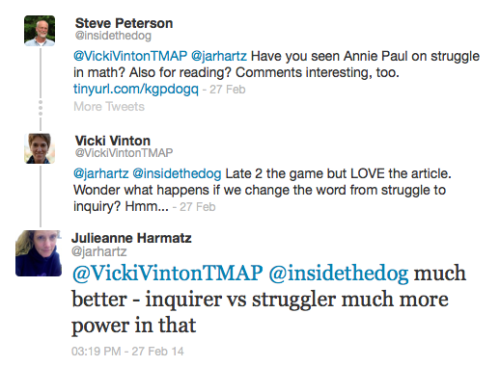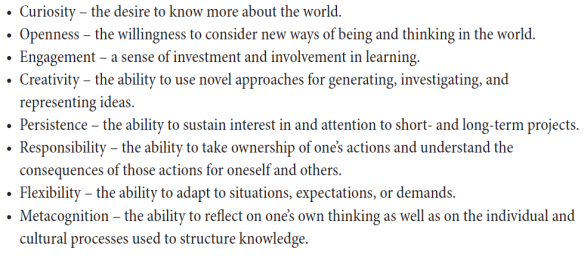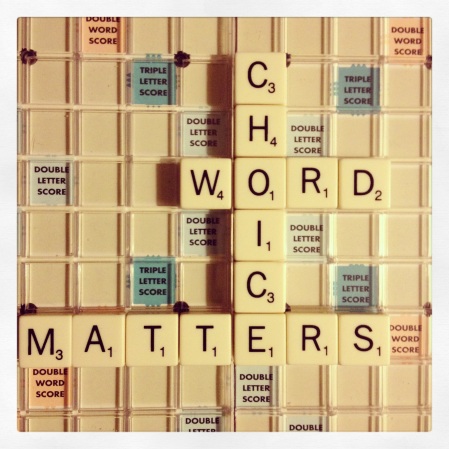
For years, Thanksgiving has been connected in my mind with NCTE, which holds its annual convention the weekend before turkey day. And for the third year in a row, I’ve sat at my desk after Thanksgiving to give thanks to all the people I heard at NCTE who inspired and energized me. This year, however, feels different because between NCTE and Thanksgiving something else happened: Ferguson. It’s become a word that stirs up a whole battery of feelings for me—from sadness to outrage to shame. Shame that we live in a country where people seem more expendable than guns. Shame that we can’t seem to bring ourselves to have the kind of hard conversations we desperately need to have about guns, race, poverty, inequality and what’s going on in our schools.
These feelings hovered over my Thanksgiving, but I still want to share some of the voices I heard last weekend because, as writer Roxane Gay writes in her heart-wrenching essay about Ferguson: “Only Words”:
“I have to believe we are going to be better and do better by one another even if I cannot yet see how. If I don’t believe that, I, we, have nothing.”
NCTE helps me believe this in many ways. I might not have read Roxane Gay’s essay, for instance, were it not for my friend and fellow presenter Katherine Bomer, who shared some of Gay’s writing in her presentation last week. Then in one of those synergetic NCTE moments that Burkins & Yaris write about, I spotted Gay’s name in a tweet from another NCTE presenter Paul Thomas, who writes the thought-provoking blog The Becoming Radical. I checked out Gay’s essay, as I urge you to do, and was moved by her powerful words. And I was moved as well to make a donation to the Ferguson Library, which you can do by following the link at the end of the essay.
 Then there was the Convention itself. This year’s theme was “Story as the Landscape of Knowing,” but as happened before, I noticed a pattern in the sessions I attended, which suggested another related theme: the need for us, as teachers, to focus our work first and foremost on helping students build strong identities as readers, writers and thinkers who are able to raise their voices with confidence, conviction and compassion.
Then there was the Convention itself. This year’s theme was “Story as the Landscape of Knowing,” but as happened before, I noticed a pattern in the sessions I attended, which suggested another related theme: the need for us, as teachers, to focus our work first and foremost on helping students build strong identities as readers, writers and thinkers who are able to raise their voices with confidence, conviction and compassion.
The first session I attended addressed this directly, as educators Justin Stygles, Kara DiBartolo and Melissa Guerrette joined authors Lynda Mullaly Hunt and Liesl Shurtliff to talk about “Revising the Story: Reluctant Readers Overcoming Shame.” In different ways each speaker looked at what Justin called ‘contra-literacy’ practices—those things we do in classrooms which, while often well-intentioned, not only can kill a love of reading but breed a sense of shame. Each also shared personal and classroom stories of students who’ve shed the stigma of shame through teachers and books that helped them develop a sense of agency. And I left with two new must-reads: Lynda’s new book Fish in a Tree and Liesl’s re-imagining of Rumpelstiltskin, Rump, both of which have main characters who overcome a sense inadequacy to triumph.


Next up was for me was Sheridan Blau, author of the great book The Literature Workshop. He, too, looked at practices that turn kids off of reading, including ones that promote what he called “inattentional blindness”—tasks that, by narrowing students focus to hunt for a particular thing in a text, blinds them to other things that might be more meaningful. He demonstrated this by showing us a video we later learned was called “The Invisible Gorilla,” and asking us to count how many times a ball was being passed—and intent on counting the passes, I completely missed the gorilla! And he proposed an alternative to those tightly focused tasks: giving students opportunities to bring their whole self to a text so that they can experience and feel a text before they’re asked asked to analyze it.
 I noticed the theme, too, in Matt Glover, Kathy Collins and Dan Feigleson‘s session on engaging and inspiring readers. Matt began by showing us how easy it is to help our youngest readers develop identities as readers. All we need to do is honor their approximations, give them some choice and listen. But he cautioned that it was just as easy to destroy those identities if we evaluate students’ choices and attempts. Next Kathy shared the idea of turning readers notebooks into scrapbooks that record students’ personal journey as readers—which, as a scrapbook lover, I adored. And Dan ended the session by sharing some of the ideas he explores in his new book Reading Projects Reimagined: Student-Driven Conferences to Deepen Critical Thinking, and showing us the thinking that emerges if, in a conference, we simply keep asking students to say more.
I noticed the theme, too, in Matt Glover, Kathy Collins and Dan Feigleson‘s session on engaging and inspiring readers. Matt began by showing us how easy it is to help our youngest readers develop identities as readers. All we need to do is honor their approximations, give them some choice and listen. But he cautioned that it was just as easy to destroy those identities if we evaluate students’ choices and attempts. Next Kathy shared the idea of turning readers notebooks into scrapbooks that record students’ personal journey as readers—which, as a scrapbook lover, I adored. And Dan ended the session by sharing some of the ideas he explores in his new book Reading Projects Reimagined: Student-Driven Conferences to Deepen Critical Thinking, and showing us the thinking that emerges if, in a conference, we simply keep asking students to say more.
 Dorothy Barnhouse and Charlotte Butler also addressed this theme in their session, “Story as Identity: How Reading Conferences ‘Write’ the Stories Students Tell Themselves,” as each shared ways of turning what could be seen as a student’s deficits into a positive strength. Dorothy, for instance, shared one of the conferences she writes about in Readers Front and Center, where a student’s apparent inability to infer becomes an opportunity to show him—and us—that it’s less important to ‘get’ something right away than to read forward with an open mind and a willingness to revise his thinking, which the student was able to do. Charlotte, on the other hand, shared work she’d done with Ken and Yetta Goodman on Retrospective Miscue Analysis, which also helped students recast what could be seen as mistakes into something more positive—in this case, minds striving to make meaning.
Dorothy Barnhouse and Charlotte Butler also addressed this theme in their session, “Story as Identity: How Reading Conferences ‘Write’ the Stories Students Tell Themselves,” as each shared ways of turning what could be seen as a student’s deficits into a positive strength. Dorothy, for instance, shared one of the conferences she writes about in Readers Front and Center, where a student’s apparent inability to infer becomes an opportunity to show him—and us—that it’s less important to ‘get’ something right away than to read forward with an open mind and a willingness to revise his thinking, which the student was able to do. Charlotte, on the other hand, shared work she’d done with Ken and Yetta Goodman on Retrospective Miscue Analysis, which also helped students recast what could be seen as mistakes into something more positive—in this case, minds striving to make meaning.
Coincidentally or not, these themes were also present in the two sessions I participated in. As chair of “It’s Not Just for the Kids: Stories of What Can Happen When Teachers Embrace Curiosity, Openness, Creativity & Wonder,” I had the honor of introducing my session presenters, Fran McVeigh, Julieanne Harmatz, Steve Peterson and Mary Lee Hahn, all of whom met each other through this blog and only came to together in person last week. (They also each wrote about the session in their respective blogs, which you can read by clicking on their names). I’d asked them each to think of a question they were curious about and invited them to pursue that question and present what they discovered. And in each case they found that children can do far much more than we sometimes think they can, if only we open the door wide enough.

Finally in “Embracing Complexity,” I presented alongside Mary Ehrenworth and Katherine Bomer who also focused on empowering students. Mary, for instance, shared the work she’s been doing to help students see multiple layers of ideas in nonfiction texts, which they can talk back to. And Katherine made a passionate plea for us to leave behind formulaic structures and cutesy metaphors like hamburgers when we teach writing essays and instead return the the root of the word—’to try’ or ‘attempt’ not ‘to claim’ and ‘prove’—in order to create something that’s more exploratory than declarative and raises more questions than answers.
And that brings me back to Roxane Gay, who asks this critical question: “How do we see one another as human, as having lives that matter, as people deserving of inalienable rights?” I believe the answer lies in part in classrooms and in people like the ones I heard at NCTE who are trying to help children revise, rewrite, recast and reimagine the stories of their lives so that we can all be and do better. And that makes me both hopeful and thankful in a time of sorrow.



 Before jumping on the Bolt Bus to D.C., however, I’ll be heading half-way around the world to the city of Doha in Qatar. In addition to working for several days with teachers (and my Reggio-Emilia comrade, Katrina Theilmann) at the American School in Doha, I’ll be facilitating a two-day workshop on “Teaching the Process of Meaning Making in Reading,” as part of the
Before jumping on the Bolt Bus to D.C., however, I’ll be heading half-way around the world to the city of Doha in Qatar. In addition to working for several days with teachers (and my Reggio-Emilia comrade, Katrina Theilmann) at the American School in Doha, I’ll be facilitating a two-day workshop on “Teaching the Process of Meaning Making in Reading,” as part of the  Ohio to Iowa to California, through the blogosphere.
Ohio to Iowa to California, through the blogosphere. After that I’ll be in Portland, Oregon, December 9 and 10, presenting a workshop for educators sponsored by
After that I’ll be in Portland, Oregon, December 9 and 10, presenting a workshop for educators sponsored by  And finally, after what I hope will be two balmy days in Los Angeles in January working with LAUSD’s wonderful Education Service Center South coaches and teachers, I’ll be heading north to wintery Toronto for the
And finally, after what I hope will be two balmy days in Los Angeles in January working with LAUSD’s wonderful Education Service Center South coaches and teachers, I’ll be heading north to wintery Toronto for the 

 To me, all three seem to have strangely negative connotations. And in that, I’m not alone. Many educators have pointed out that, if we look up the word rigor in the dictionary, we find definitions that suggest something downright punishing. That’s why some educational writers, such as
To me, all three seem to have strangely negative connotations. And in that, I’m not alone. Many educators have pointed out that, if we look up the word rigor in the dictionary, we find definitions that suggest something downright punishing. That’s why some educational writers, such as  unpleasant, boring or even painful that someone else has said is good for you—like eating your vegetables or sitting through days and days of standardized testing. And as
unpleasant, boring or even painful that someone else has said is good for you—like eating your vegetables or sitting through days and days of standardized testing. And as 



 Many of the practices he suggested were similar to those advised by
Many of the practices he suggested were similar to those advised by 




 Compared to the students who were circling A or D in the Anticipation Guides above, these students were involved in much higher order thinking as they used what they’d noticed to infer and developed hypotheses that might explain what caused the difference in the two pictures. They were constructing new understanding, at least a provisional one. And feeling a burning need to know, especially about the fate of the buildings, they eagerly dove into an article about the problems Venice faced with the kind of intellectual involvement that Charlotte Danielson speaks about.
Compared to the students who were circling A or D in the Anticipation Guides above, these students were involved in much higher order thinking as they used what they’d noticed to infer and developed hypotheses that might explain what caused the difference in the two pictures. They were constructing new understanding, at least a provisional one. And feeling a burning need to know, especially about the fate of the buildings, they eagerly dove into an article about the problems Venice faced with the kind of intellectual involvement that Charlotte Danielson speaks about. I’m aware, of course, that it may seem much easier to tap into students’ curiosity with a compelling image than with a complex text (which
I’m aware, of course, that it may seem much easier to tap into students’ curiosity with a compelling image than with a complex text (which 

 For those of you who don’t already know, the passage in question was a parody of an Aesop fable called “
For those of you who don’t already know, the passage in question was a parody of an Aesop fable called “ On the positive front, though, what all this has done is shed light on the insanity of judging students, teachers and schools by a standardized test. And it’s sparked a loud outcry among parents and educators. Brooklyn Prinicpal Liz Phillips, for instance, wrote a
On the positive front, though, what all this has done is shed light on the insanity of judging students, teachers and schools by a standardized test. And it’s sparked a loud outcry among parents and educators. Brooklyn Prinicpal Liz Phillips, for instance, wrote a  The same couple, Anne Stone and Jeff Nichols, also wrote “
The same couple, Anne Stone and Jeff Nichols, also wrote “ And finally, from Education Nation’s The Learning Curve blog, there’s “
And finally, from Education Nation’s The Learning Curve blog, there’s “